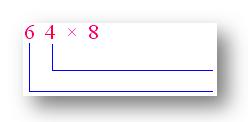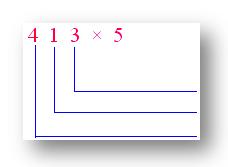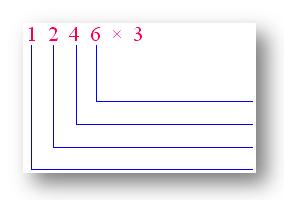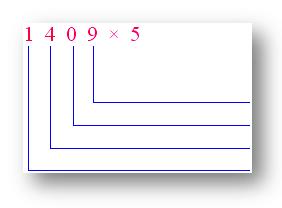Subscribe to our ▶️ YouTube channel 🔴 for the latest videos, updates, and tips.
Multiplication
In multiplication we know how to multiply a one, two or three-digit number by another 1 or 2-digit number. We also know how to multiply a four-digit number by a 2-digit number. We also know the different methods of multiplication. Here, we shall make use of the methods and procedures learnt previously in multiplying larger numbers.
The numbers that are being multiplied are called factors.
The answer of a multiplication operation is called a product.
Let us recall the properties of multiplication:
I. The product does not change when the order of the numbers is changed.
5 × 4 = 4 × 5
6 × 3 = 3 × 6
II. The product does not change when the grouping of numbers is changed.
(6 × 7) × 4 = 6 × (7 × 4)
2 × (5 × 3) = (2 × 5) × 3
III. The product of a number and 1 is the number itself.
96 × 1 = 96
72 × 1 = 72
IV. The product of a number and 0 is 0.
754 × 0 = 0
316 × 0 = 0
For examples:
40 × 5 = 200
400 × 5 = 2000
4000 × 5 = 20000
Now, we will recall how to do multiplication of a number by a 1-digit number.
Examples on Expanded Notation Method:
1. Use expanded notation to multiply 64 and 8.
Answer: 512
3 and 4 digit numbers can also be multiplied by a 1 digit number using the expanded notation method.
2. Use expanded notation to multiply 413 by 5.
Answer: 2065
3. Use expanded notation to multiply 1246 by 3.
Answer: 3738
4. Use expanded notation to find the product of 1409 and 5.
Answer: 7045
Let us first revise the process of multiplication.
Consider the following:
1. Multiply 215 by 7
Solution:
(i) (Expanded notation method)
215 × 7 = (200 + 10 + 5) × 7 1 4 0 0
= 200 × 7 + 10 × 7 + 5 × 7 + 7 0
= 1400 + 70 + 35 + 3 5
= 1505 1 5 0 5
(ii) (Column method)
|
Product = 1505 |
(i) 5 ones × 7 = 35 = 3 tens + 5 ones |
2. Multiply 6103 by 8
Solution:
(i) (Expanded notation method)
6103 × 8 = (6000 + 100 + 0 + 3) × 8 4 8 0 0 0
= 48000 + 800 + 0 + 24 + 8 0 0
= 48824 + 0
+ 2 4
4 8 8 2 4
(ii) (Column method)
|
Product = 4 8 8 2 4 |
(i) 3 one × 8 = 24 ones = 2 tens + 4 ones |
So, 6103 × 8 = 48824
3. Find the product of 2113 and 3 using column method.
Solution:
Related Concept
● Addition
● Check for Subtraction and Addition
● Word Problems Involving Addition and Subtraction
● Estimating Sums and Differences
● Multiply a Number by a 2-Digit Number
● Multiplication of a Number by a 3-Digit Number
● Word Problems on Multiplication
● Division of Two-Digit by a One-Digit Numbers
● Division of Four-Digit by a One-Digit Numbers
● Division by 10 and 100 and 1000
● Division by Two-Digit Numbers
4th Grade Math Activities
From Multiplication to HOME PAGE
Didn't find what you were looking for? Or want to know more information about Math Only Math. Use this Google Search to find what you need.









New! Comments
Have your say about what you just read! Leave me a comment in the box below. Ask a Question or Answer a Question.